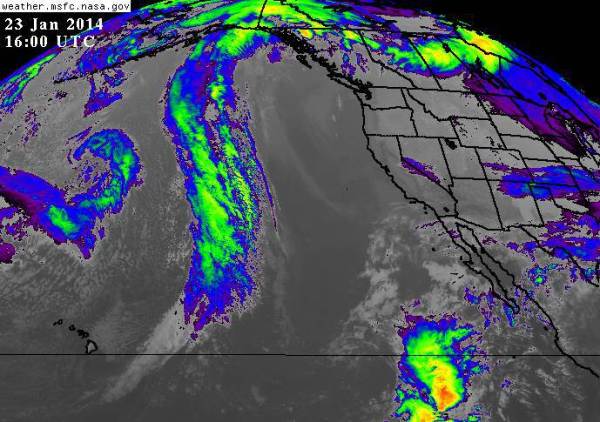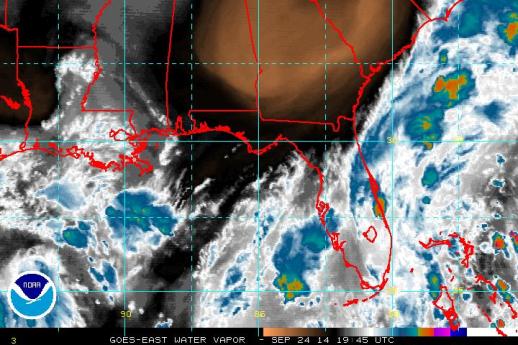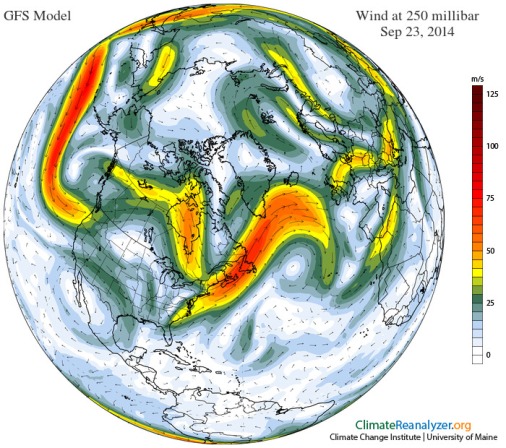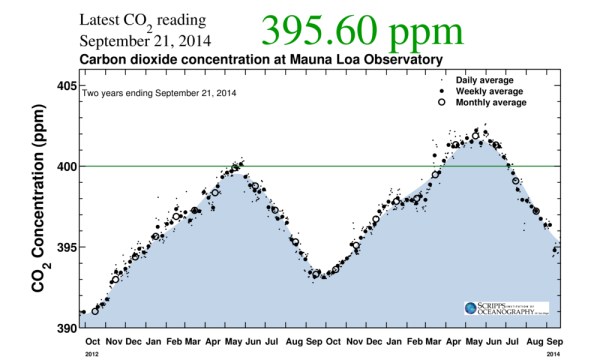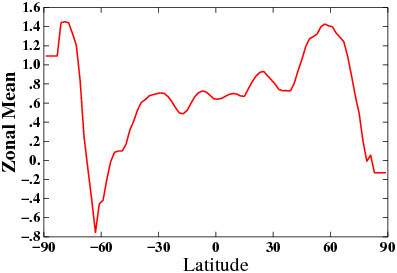On a world in which fossil fuel burning is now in the process of setting off various events of geological scale, one of the things we could well hope for most is a peak in fossil fuel supply. Such an event would force countries and economies to adjust. To abandon business as usual economics and to rapidly shift to approaches that enhance and reinforce lifestyles and energy consumption behaviors that do not radically alter the world’s environment for the worst.
But, unfortunately, as we will see below, there is more than enough oil, gas, coal, brown coal, fracked oil and gas, gas hydrates, tar sands, kerogen and other fossil fuel stores to continue burning for years, decades and perhaps even centuries to come. So to hope for peak fossil fuel use, unless that peak is determined by responsible individual, community, and political action, is a false hope. An end that sets off terrible consequences. Even worse than those difficult to deal with problems we’ve already locked in.

(The Bazhenov Shale Formation. An Arctic oil and gas reserve now accessible due to US driven technological ‘advancements’ in hydro-fracking. This vast pool of tight oil has 1.2 to 2 trillion barrels of oil in place of which 75 to 330 billion barrels are currently estimated to be recoverable [Depending on who is making the estimation — US or Russian Government]. It is, perhaps, not a coincidence that these reserves occur in the same region where troubling methane blow-holes first appeared this summer. It is this massive supply of oil that is being directly targeted by the Exxon-Mobile/Rosneft partnership before sanctions this week put the effort on hold. Accessing this massive carbon bomb would lock in billions of additional tons of CO2 release into the atmosphere while, by itself, delaying a global peak in oil production by years to decades. The consequences of burning this massive fuel source are almost certainly far worse than simply leaving it in the ground. Image source: Commons.)
*****
Back in the mid 2000s there was an oil industry energy consultant by the name of Matthew Simmons. And Simmons had developed a laser-like focus on a massive store of ‘easy oil’ in the deserts of Saudi Arabia. This store was locked in the great oil field called Ghawar. A self-pressurized dome that originally contained about 80 billion barrels of the hothouse gas firewater we call oil. Prick Ghawar with a drill and the stuff just came erupting out. Deceptively clear for all the btus of global atmospheric heating it contained.
At some point, the black magic of Ghawar began to fade. Saudi Arabia started to inject water into the Ghawar well to keep the oil flowing. This required more energy and increased costs. For Saudi Arabia and much of the world, the age of easy oil was coming to an end.
Simmons declared that peak oil was just around the corner. That global oil production couldn’t exceed 85 million barrels per day. And that the new, unconventional sources — locked in tight oil deposits and tar sands — were too difficult to extract. Peak oil analysts declared that the Bakken would never exceed a flow rate of 100,000 barrels per day. And the Eagle Ford Shale basin was just a glimmer in the eye of most analysts. Risks for an imminent peak in world oil supply did seem quite high.

(Map of the Bakken tight shale fields in the Williston Basin. The Bakken is estimated to contain 24 billion barrels of oil of which 7.3 billion barrels are currently considered to be technically recoverable. Image source: Commons.)
For some, for conservationists and those who are justifiably very concerned about the impacts of continued fossil fuel based carbon emissions on the world’s climate systems, the notion of an imminent peak in world oil supply came as welcome news. It would force economies to adjust to new structural and environmental realities and it would help to prevent some of the worst impacts of climate change. Certainly, there were still massive volumes of coal and natural gas to consider. But a peak in world oil production would lead to a variety of consumption reductions as well as help to advance renewable energy technology — so long targeted for delay and denial by oil and fossil fuel interests through their wealthy political backers.
For most market analysts and economists, peak oil was never an object. They believed the magic of market economics would always provide a new resource and that the price signal would be enough to produce more resources of different varieties. But these analysts were somewhat blind to the broader impacts of large governmental movements and of investment or failure to invest in new resources by communities, states, and policy-makers.
In many ways, all of these analysts held somewhat correct views. But contained to their narrow focus, they failed to accept where the others were correct or to see their own short-comings. A vocal portion of the peak oil analysts, led by Simmons, retained a narrow, and primarily easy oil and fossil fuel centered world-view that not only denigrated the effectiveness of new oil technology to over-come any peak oil situation, but also blithely dismissed much of the potential for renewables to take up for new energy production. They held a rigid view that only radically reduced consumption (and related implied wide-scale poverty and collapse back to 19th century standards of living) would result from peak oil and that such reduced consumption and collapse was needed and, indeed, would happen whether we liked it or not. Some conservationists seemed to glom on to the notion that renewables were not a desirable solution and this led steam to the anti-renewables faction.
Though the push for lower consumption from peak oilers and conservationists was somewhat helpful, without the renewable option their world-view led to more implied reliance on fossil fuels through active denial of alternatives. And it left the door wide open for new oil related extraction technologies to come charging in absent any wide-spread renewable energy adoption.
The market analysts were labeled ‘cornucopians’ by the more militant peak oilers or related agitators. In fact, this was a term that seemed to include anyone who supported any technology whatsoever, including sustainability based technical solutions. Contrary to peak oilers, the analysts pushed a view that the supply crunch, at first, wouldn’t happen. And, when they were proven wrong, went about cheer-leading for the new fracking technologies and for opening up the unconventional oil basins.
An outside group of progressives pushed hard for new renewable resources. And, given the opening provided by high fuel prices, they were partially successful, despite the constant attacks coming from renewable energy detractors and in spite of a broad front of oil industry advanced extraction technologies competing in the energy investment sector.
Consequent to Simmons’ warnings, a peak in conventional fuels did happen during the period of 2006 to 2008. Prices rocketed and economies were jarred by the shock. A shift toward more renewable energy and efficiency was driven by the crisis. Consumption fell and the world economy stalled in a combined energy and market derivatives crash. But the market signal and increased prices for energy unlocked technology that lead to the rapid expansion of production in Bakken, Eagle Ford, in Canada’s tar sands and in other far-flung basins around the globe.

(EIA map of the Eagle Ford shale play in South Texas. It’s a basin that extends into North Mexico and contains an estimated 10 billion barrels of recoverable together with trillions of cubic feet of natural gas. Image source: Commons.)
Today, the wretched energy and carbon intensive and highly polluting process that is fracking now squeezes 1 million barrels per day out of the Bakken formation. It wrings 1.7 million barrels per day out of the Eagle Ford formation. Add this staggering production gain to other fracking and conventional extraction efforts across the country and we find that the United States now produces a staggering 13.9 million barrels of liquid fuels per day.
This makes the US the highest volume liquid fuels producer in the world on the back of a terrible breaking of the ground and increasing extraction of a fuel source that is already in the process of wrecking the world’s climate.
Globally, despite struggling production in the Middle East and elsewhere, production of the firewater continued to rise. Canada’s tar sands production spiked to more than 2 million barrels per day with the Arctic state planning for a jump to 5 million barrels per day by 2030. An ongoing carbon bomb explosion that, by itself, could well be described as a tract of human-generated flood basalt.
These and other oil sources combined with enhanced extraction to push global daily oil production from 85 million barrels per day during the mid 2000s to approaching 92 million barrels per day in 2014. This on the back of oil reserves additions in the form of tar sands at 168 billion barrels of extractable oil (total reserve at around 300 billion barrels), Eagle Ford at 10 billion barrels of currently recoverable oil (total reserve at 80 billion barrels), West Texas at 30-75 billion barrels of recoverable oil, Bakken at 7.3 billion barrels of recoverable reserves, and many other regions around the world that are now seeing new oil extraction or enhanced oil extraction.

(The Permian Basin of West Texas now containing between 30-75 billion barrels of recoverable oil due to climate-endangering fracking technology. Image source: Commons.)
So Simmons was wrong on the issue of oil peaking at 85 million barrels per day, and many peak oil analysts along with him.
And so it goes with the global fossil fuels story. As of 2014 we burn more oil, gas and coal than we ever have and global peak oil has again been removed to some future date. The global carbon emission is now enough to completely overshoot the lower range IPCC emissions scenarios and we are staring down the face of the highly unpleasant middle and worst case ranges. So in this respect, a number of peak oilers were dreadfully wrong — peak oil did not save us from climate change. In fact, bad effects are now locked in and the debate has shifted to whether or not there is enough extractable oil, gas and coal to hit the worst case scenarios.
But if history doesn’t repeat itself, it does rhyme. For now it appears that both Eagle Ford and Bakken, due to the nature of rapid fracked well depletion, will peak sometime during 2016 and 2020. And the peak oilers are now having a bit of a rally, as challenges to global production, many of them political, are also continuing to expand.
On The Verge of a Voluntary Peak
The environmentalists and scientists, thankfully, appear to be on the verge of successfully putting a crimp on Canada’s tar sands production. The US has sanctioned Russian oil production and a massive set of Arctic and shale reserves many times the US tight shale reserve hangs in the balance (a resource of ultimate reserves on the order of 1.2-2 trillion barrels of oil of oil in place). Barriers to fracking are rising and companies, facing a production glut today and investor uncertainty tomorrow, are in the process of consolidation and retraction.
China is pledging to vastly reduce fossil fuel consumption growth and many oil exporters are beginning to wonder if they’ll have a market for their products there. Around the world, the situation is similar as governments and consumers both push for less use of dirty, dangerous, depleting and costly fossil fuels.
In addition, renewable energy and alternatives have never been more widely available. Solar panel costs are down and EROEI is up. Wind power beats fossil fuel generation in most markets even when considering a natural gas glut due to fracking. Electric vehicles continue to become more widely available and CAFE standards around the world keep rising. An expanding movement is afoot to shift diets to less meat intensive ones — thereby pushing for a reduction in both the land and fossil-fuel use footprint of agriculture. And all these changes aim directly at reducing fossil fuel demand and consumption, generating impetus, along with the political movements targeting both new and old sources for an artificial, voluntary peak in fossil fuel flows.
And this is exactly what we would desire, a direct refusal of business as usual economics. A voluntary taking on of responsible action, economic transition, and behavior change needed to reduce and eventually eliminate an extraordinarily damaging carbon pollution. As has been said, the Stone Age didn’t come to an end for lack of stones. And this could well be the case with fossil fuels, if we actively make that choice. Whether or not it happens essentially depends on people’s perception of the need for it to happen.
Fear of Peak Oil as a Means To Force Continuation of Business as Usual
But the voluntary peak is no-where near a pre-ordained certainty. There is an extraordinarily strong array of political forces aimed at both denying the existence of climate-related harm and doing everything possible to extend business as usual fossil fuel extraction for so long as it is economically and technologically possible. To deny the expansion of renewable energy access and to block access to measures that reduce consumption. To, overall, degrade the political will to respond effectively to a climate crisis that is directly linked to ongoing fossil fuel burning.
And one potential political lever for this forced extension is advancing the fear of peak oil. For if people are wrongly led to believe that peak oil is a worse event than climate change, then it is unlikely people will make the changes necessary to transition away from fossil fuels. They, like the climate change deniers, will cling to fossil fuel extraction in the same way passengers unaware of the existence of life-rafts will cling to the upper tiers of a sinking ship.
How does fear of peak oil work? It’s simple.
First deny, degrade or ignore any potential value to human civilization for renewable energy sources (this is easy for oil industry folks, because they’ve had years of practice advancing anti-renewables misinformation). This includes using energy return on energy invested (EROEI) figures that are outdated or simply false.

(In the EROEI battle, renewables win the electricity production race hands down. From top to bottom: light green = hydroelectric, teal = wind, purple = coal, light blue = nat gas, dark green = photovoltaic solar, and dark blue = nuclear. It’s worth noting that solar pv energy return on energy invested continues to rise and is now estimated at 7 according to newer figures. It is also worth noting that the best energy return on investment for individual vehicle transportation comes from an electric vehicle plugged into a renewables fed grid. Image source: Scientific American.)
Second, declare an extreme supply-side ideology in which only fossil fuels have any practical means to fulfill supply needs. In this view, all farming relies on fossil fuels and cannot trade inputs or flexibly change how food is produced to help ensure resiliency (meat to veg, polyculture agriculture, edible landscaping, individually grown gardens, etc). So if fossil fuels peak, access to food is seen to peak as well.
Third, over-emphasize the value of fossil fuels to all levels of civilization with the implied need for fossil fuel related industry to support civilization.
This mind-set is in direct contradiction to the appeal first advanced by Limits to Growth authors for a transition to a sustainable civilization that did not rely on environment-polluting and resource-destroying energy sources as the basis for its prosperity. In fact, it directly obscures the need for such solutions by placing the notion that civilization is only sustainable so long as fossil fuels are available and that civilization inevitably dies without them.
From LTG:
If society’s implicit goals are to exploit nature, enrich the elites, and ignore the long term, then society will develop technologies and markets that destroy the environment, widen the gap between rich and poor, and optimize for short-term gain.
And it is reliance on fossil-fuel based technology that directly reinforces the vicious cycle that Meadows so eloquently describes above.
The final element of the fear peak oil and cling to fossil fuels mind-set is to, at last, deny climate change and, more specifically, to deny that enough fossil fuels remain in the ground to set off climate change that is a threat to human civilization. And it is in this assertion, that they have excessively over-reached and are baldly incorrect (as many who keep tabs here are well aware).

(More and more of a globally estimated 13-20 trillion tons worth of fossil-fuel based carbon are unlocked through advancing extraction technology each year. Is it really a sensible approach to simply wait for such technologies to fail? Image source: IPCC.)
Negative Impacts of Climate Change Now Ongoing, More than Enough Fossil Fuels to Wreck the Climate Many Times Over
So with oil and fossil fuels demand now in trouble due to a broad political and grass-roots response, due to spreading measures that reduce fossil fuel consumption, and due to rapidly expanding ease of access to various renewable energy based technologies, a new Matthew Simmons – type view has emerged.
The view is that Bakken and Eagle Ford are about to peak and with it, North American fossil fuel production will plateau or start falling and that a global peak is in the offing sometime around 2030. As with the Ghawar field focus, the view is likely correct in micro. The fields will probably peak by 2016-2020 and global oil production during the same period will (thankfully) suffer due to a combination of reluctance to invest on the part of oil companies, political constraints that hamper oil flows in Asia and the Middle East, and due to broader conservation measures and alternative energy adoption that begins to put the crimp on world oil demand.
And how we respond to this potential crisis in world oil supply will have far-reaching impacts for both energy and climate going forward. If we see the peak as something we must avoid at all costs, what we will witness is the rapid expansion of fracking in foreign countries to include the exploitation of massive tight fuel resources in Russia and China. We will see the expansion of US oil production through enhanced extraction in the West Texas formation. We will see the barriers to tar sands extraction fall and Canadian tar sands oil rocket to 5 million barrels per day. We’ll see the China syngas operation horrifically expand to an environmental catastrophe to rival that of Canada’s tar sands. And we’ll see the first forays into gas hydrate extraction. We’ll see more coal plants converted to burn brown coal – a massive resource already exploited in conventional coal-poor regions. And we’ll see oil extraction extend into the climatologically violent Arctic.
This expansion will not come without its severe costs. Fossil fuel prices will rise, poverty in many regions will expand. But without some major catastrophic event, net consumption, driven by an ever-expanding fossil fuel and related industry, will continue to increase over at least the next two decades and may well extend beyond 2030 as the massive unconventional resources continue to be tapped. For the political will for reducing such consumption will have been subsumed by fear of peak oil and the alternatives will, again, have been tamped down.
Or, instead, we can embrace peak oil and stop trying to fight off what will inevitably occur over the course of decades or centuries. We can actively decide to change how much and what we consume and we can push hard for renewable energy and broad sustainability measures in agriculture. And through that action we might prevent a portion of the climate catastrophe we have already partly locked in. We can learn not to fear peak oil, but to pursue it, along with the will-full and socially chosen peaking of all fossil fuel sources. We can say goodbye to the age of burning and open a new age where we attempt to deal with the consequences of fossil fuel based industrialism before it’s too late. Before we no longer have the opportunity to.
That’s our choice. But going into it, don’t be comforted with false notions that we don’t have enough carbon sources to wreck the climate. And don’t, for goodness sake, embrace the notion that peak oil is the worst problem we face. Instead, it is a necessary problem. Part of the active and, admittedly, difficult act of changing how we live and of attempting to make human civilization both a more resilient and less harmful beast.
Links:
Bakken Shale Oil Boom
Eagle Ford Crosses 1.5 Million Barrels Per Day in September
US Energy Information Agency’s Short Term Energy Outlook
The Case For a Moratorium on Tar Sands Development
Alberta Energy
West Texas Shale Could Dwarf Eagle Ford
Permian Basin Oil Production
How Many Barrels are in the Bakken?
The Bazhenov Formation
Behind the Numbers on Energy Return on Investment
The Ghawar Oil Field
Limits to Growth
Twilight in the Desert
Hat tip to Pintada (in answer to some of your questions)


